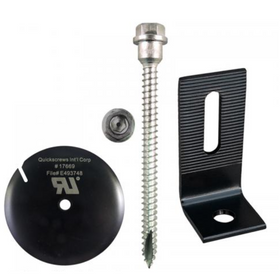
Flood-Ready Homes: How To Prepare
Last Updated: Feb 2, 2025In 2017, Hurricane Harvey descended upon Houston, Texas, and dropped record amounts of rains for several days. By the time the skies cleared up, over 135,000 homes had suffered severe flood damage. About 80 percent of those homeowners were without flood insurance to protect the investment in their homes.
As global climate change continues to lead to more severe weather events, the probability of the mythical "1,000-year flood" becomes a likelihood that many people might experience not just once but several times during their lifetime.
Little can be done to protect a home situated in a massive flood plain when a storm like Hurricane Harvey hits. But, sustainable housing strategies can help homeowners protect their homes from flooding through specific design strategies. Below, we look at a few different ways to build a flood-ready home that will limit your vulnerability to flooding damage.
Table of Contents
- Know Your Elevation
- What Measures Can You Take To Protect From Floods?
- Bottom Line

You can check the grading or slope around your home by making a Bunyip water level. This method is a simple, DIY tool that will help you determine which way your water will flow around your home. Then you can manage the stormwater at your property to encourage water to infiltrate rather than build up around your home. Installing permeable paving for driveways and building bioswales are great options to promote infiltration, rather than run-off, at your property.
Homes that incorporate a rainwater catchment system and a cistern to store that water will also have better protection against flooding. An integrated rainwater catchment system will catch and store rainwater to be used by the home while mitigating the risk of flooding. Installing this type of system will stop you from discharging thousands of gallons of rainwater that accumulates and runs off your roof, down a gutter, and through your downspout system. For homes that already have a rainwater catchment system, regular checkups and maintenance on your gutter and downspout system are necessary. Even small cracks in this system can allow water to penetrate your home.
Levees and Floodwalls
Homes that are at risk for continued flooding, installing levees or floodwalls are effective protection strategies. These flood control options can include swing-hinged flood gates at the entrance to a raised property, including driveways or walkways. Flood Ark provides aluminum frames with removable UPVC boards that can be quickly assembled to offer needed protection during a flood event.
Bottom Line
Flood damage is the most common and costly event affecting homes across the country. Protect Yourself! Know your flood level. Protect the electrical equipment and installations in and around your home. Change the way you deal with stormwater on your property and protecting your home from sewer backups. You have the power to significantly reduce the likelihood of having your home affected by flooding.
Tobias Roberts
Tobias runs an agroecology farm and a natural building collective in the mountains of El Salvador. He specializes in earthen construction methods and uses permaculture design methods to integrate structures into the sustainability of the landscape.














